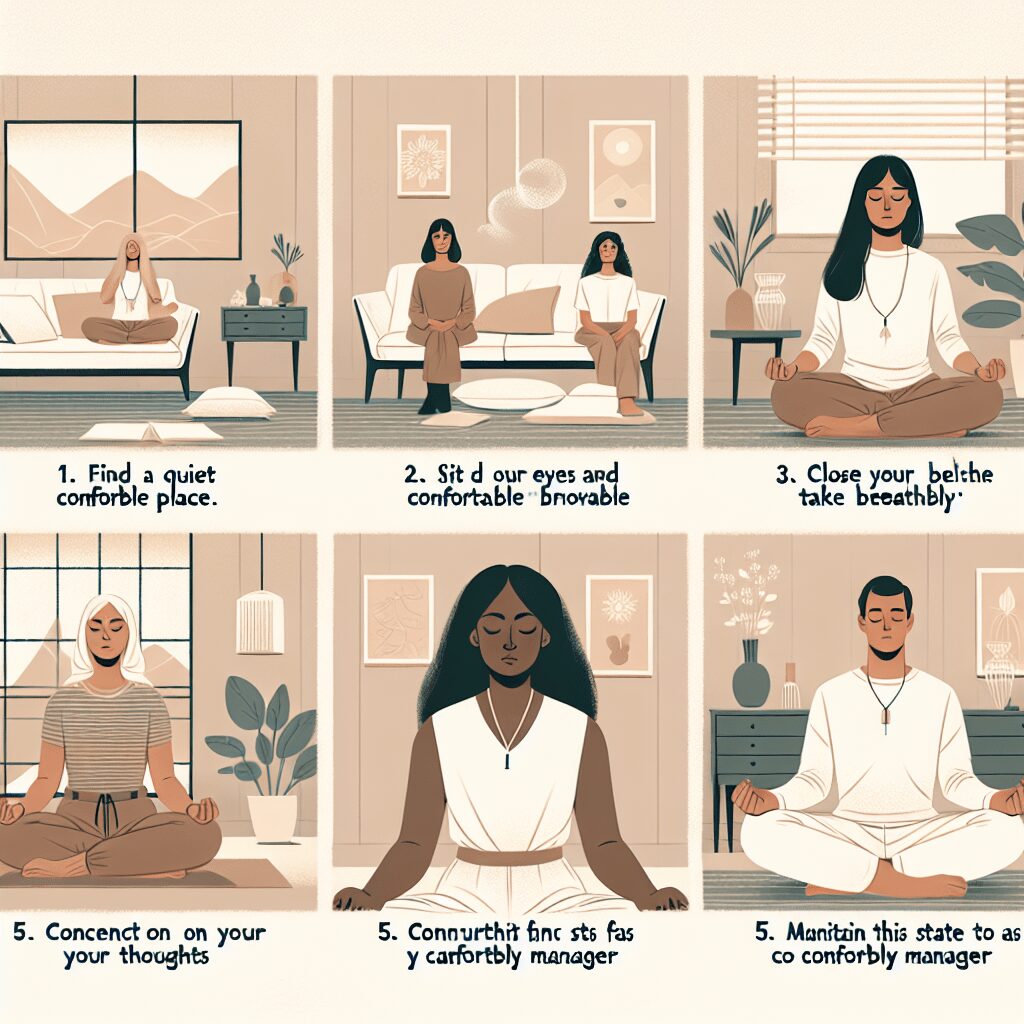
Prioritize your mental well-being daily. Enhance your life by nurturing your mental health with the Smart Meditation app. Break free from stress, alleviate anxiety, and enhance your sleep quality starting today.
How Buddhist Use Meditation?
Unlocking Tranquility: Buddhist Meditation Practices
In a world where the hustle and bustle seem to be the pervasive soundtrack, finding zen amidst the chaos can feel like searching for a needle in a haystack. But, as if holding an ancient map to tranquility, Buddhist practitioners have centuries under their belt, navigating through mental tumult to arrive at the shores of inner peace. With meditation at its heart, Buddhism offers a compelling lens through which to explore and understand the depths of human consciousness.
The Path to Enlightenment: More Than Just Sitting Still
Far from being a simple exercise in sitting quietly, Buddhist meditation is a nuanced and multifaceted practice aimed at unraveling the complexities of the mind. At its core are two primary forms that serve as the yin and yang of mental cultivation: Vipassanā (Insight) and Samatha (Calm).
-
Vipassanā (Insight Meditation): This practice is all about deep diving into the nature of reality. Practitioners are encouraged to observe their thoughts and feelings with detachment, fostering a profound understanding of the transient nature of all things, or what’s known in Buddhist parlance as “impermanence.” It’s like being a spectator at the cinema of your own mind – you watch the dramas unfold, without getting swept away by the plot.
-
Samatha (Calm Meditation): Here’s where the dial gets turned down, and focus is key. Using various objects of concentration, such as the breath or a mantra, the goal is to achieve a state of unwavering calm. Imagine your mind as a lake, its surface often disturbed by the winds of thought. Samatha is the practice of stilling these winds until the lake is as smooth as glass, reflecting the world with perfect clarity.
An Everyday Practice: From the Cushion to the Streets
Buddhist meditation is not confined to the cushion; it’s meant to spill over into every nook and cranny of daily life. Mindfulness, a key component of Vipassanā, teaches practitioners to maintain an alert and focused awareness on the present moment, whether they’re washing dishes or walking down the street. It’s about turning the mundane into the miraculous, finding depth in the simplicity of existence.
Incorporating mindfulness and meditation into daily routines crafts a life where every action is imbued with intention and every moment is met with awareness. It’s akin to putting on a pair of glasses that bring the world into focus, revealing the beauty that lies in the here and now.
Why It’s Worth a Shot: The Proven Perks of Meditation
The benefits of Buddhist meditation ripple out, touching every facet of a practitioner’s life. Scientific research is now catching up with what meditators have known for centuries – the practice can have profound effects on the mind and body. Reduced stress, enhanced concentration, improved emotional well-being, and even physical health benefits like lower blood pressure and improved immune function are just the tip of the iceberg.
Moreover, meditation fosters a sense of interconnectedness with all beings, nurturing compassion and empathy. It’s as if by exploring the inner universe, we become better citizens of the outer world.
Embarking on the Journey
Dipping one’s toes into the vast ocean of Buddhist meditation can be both exhilarating and daunting. Yet, the path is well-trodden and marked by the footsteps of countless others who’ve sought inner peace. Whether through local meditation centers, online resources, or the timeless teachings of the Buddhist canon, embarking on this journey invites a transformation that reverberates beyond the individual, into the heart of the collective human experience.
In essence, Buddhist meditation is more than just a practice; it’s a way of life. A commitment to uncovering the layers of the mind, it beckons us toward a deeper understanding of who we are and how we connect with the world. So, why not give it a whirl? The path to inner peace awaits, promising a journey as rich and varied as life itself.





